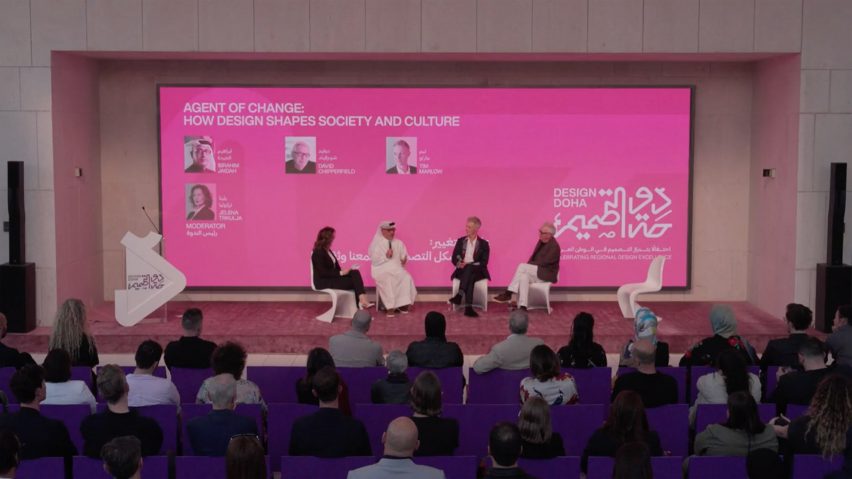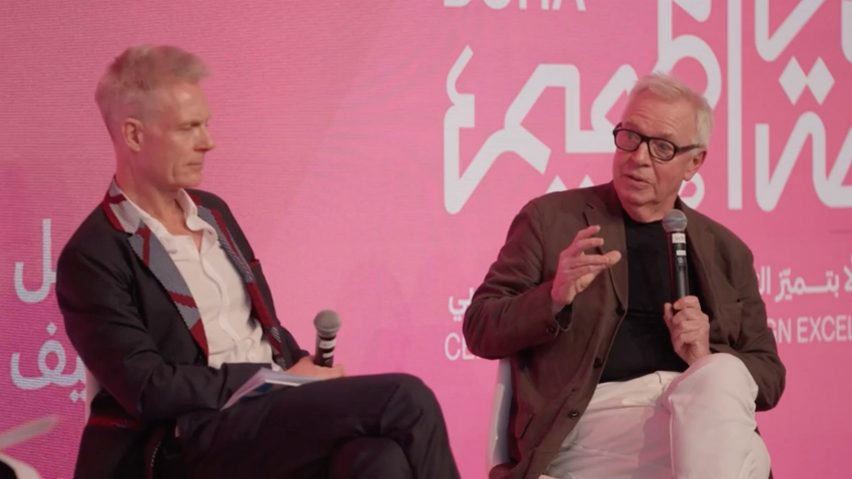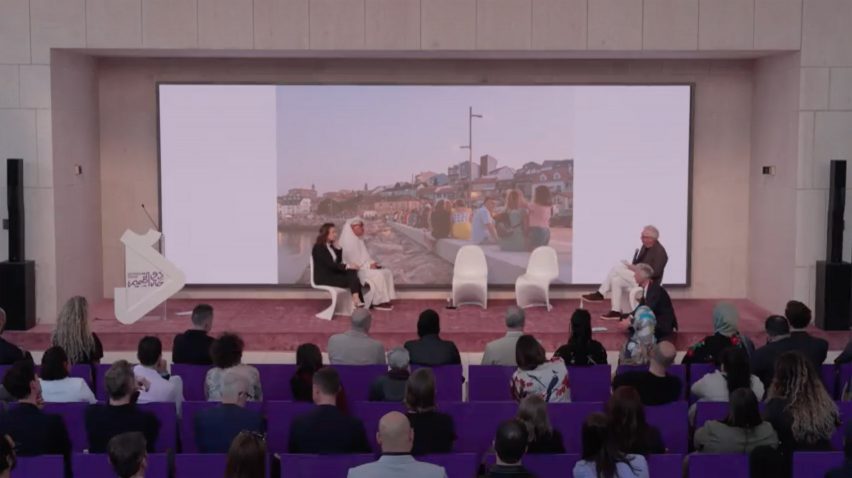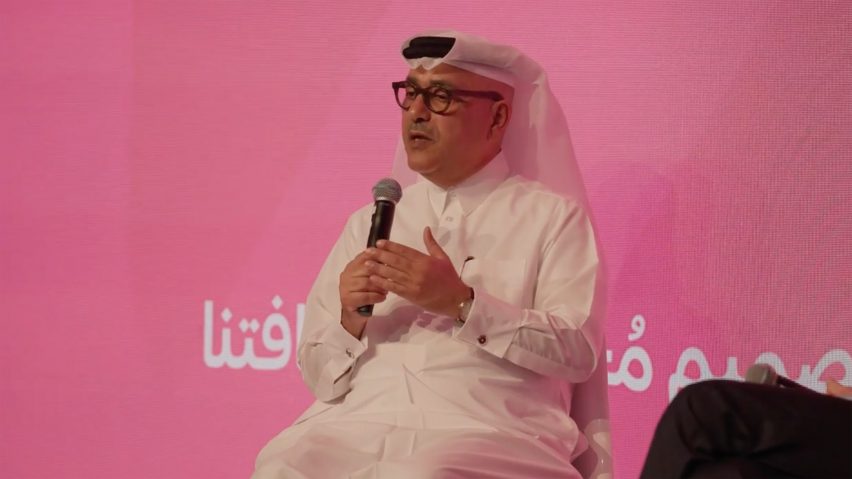Architects part of historic "social cleansing" of cities, says David Chipperfield at Design Doha
Promotion: architect David Chipperfield has delivered a critique of his profession as part of a panel discussion at the Design Doha Forum that is now available to stream on Dezeen.
Chipperfield spoke alongside Design Museum London director Tim Marlow and Qatari architect Ibrahim Jaidah on a Design Doha Forum (DDF) panel titled "Agent of change: how design shapes society and culture".
Moderated by DDF editorial director Jelena Trkulja, the panel looked at ways that design and architecture were having both a positive and negative impact on lifestyles, culture and the environment.

Chipperfield expressed a sense of anxiety about the idea of technical progress and its consequences today, especially in regards to social changes and the environmental crisis.
"I think we've changed our idea of what progress is itself. For the first time in my life, I would say there's a certain loss of confidence in the absolute notion of progress," he said.
He added that cultural heritage, identity and the problems of globalism were all "expressions of anxiety", which could be traced back to consumerism and its effects on resources and the climate.
Chipperfield said that although the most critical decisions about the built environment were made further up the "food chain", before the involvement of architects, they nevertheless had been part of a process that has changed cities for the worse.
"I would say as architects, we have been part of, in the last 30 or 40 years, a process which has not necessarily improved our cities, has made our cities more expensive to the point at which most people can no longer afford to live in them," he said.
"We've done a sort of social cleansing on cities like London, Paris, Zurich. Everybody has to live on the outside. We've been part of that."

The British architect also critiqued the involvement of his profession in globalisation, saying it had made all cities look the same and resulted in "the moving of materials from one side of the planet to the other for no real reason".
But he said that like many contemporary architects and designers, he had now reorientated his practice to try to fix some of these mistakes.
The architect spoke of a project he had completed through his research agency Fundación RIA where, after five years of community consultation, they had built a new public seating area on a former car park on the waterfront of Spanish town Portos de Galicia.
"In the maturing years of my professional career, I get enormous satisfaction of having a village as my client, a community as my client, and trying to find physical resolution and capturing common concerns and concerns that might improve quality of life," Chipperfield said.

Marlow agreed with Chipperfield, adding that educating the public and trying to shift taste was critical in enabling these kinds of projects and that the same was true for industrial design.
"If we want to find ways of reusing plastic, we have to move away from the obsession with perfect monochrome material and actually have something that looks like the Play-Doh that we all had as children, when it all got amalgamated in the same box," he said.
Jaidah, whose past work includes the Al Thumama Stadium in Doha and some of Qatar’s most iconic buildings, spoke of how he had seen tastes change in Qatar in his own lifetime.
"I have witnessed this in my 30-plus years of career," he said. "At the beginning, identity was literal: we had to continue doing what we had done. Because our history came to a halt when the oil came, that vernacular disappeared."
"It didn't evolve like other nations in the world – you got the Gothic and then you had the Renaissance and then the Bauhaus,” he continued. “No, here a halt came, and then international style came, then all these boxes."

He said that since 2000, international designers and architects had "helped us redefine what our identity or our culture is" and that adaptive reuse had become more common and considered.
"Your culture is beyond the skin of a building," said Jaidah. "It's your environment, it's your surroundings."
"I think the younger generations, the next generation, are going to be lucky because they're going to build on what they have seen. My generation had to start from almost scratch to get reinspired."
Chipperfield ended with a note that there were lessons to be learned from Qatar’s approach to urban planning, referencing the Msheireb cultural district, the "unique" area around the M7 cultural centre where the event took place.
"We've eroded our planning systems," said Chipperfield. "The government here [in Doha] decided to impose an idea of making a piece of city. In most cities – I mean outside of Switzerland, let's say – there isn't a planning authority, because we have bought into the idea of the free market."
"When you look at the commercial district, it's a very pure expression of market forces, as is now London," he continued. "That's what the market does if you leave it alone, and I think that's the issue that we have to think about."
The panel talk took place on 26 February as part of the forum at Design Doha, a biennial event that was held for the first time this year. For more information on the event, visit the Design Doha website.
Partnership content
This article was written by Dezeen for Design Doha as part of a partnership. Find out more about Dezeen partnership content here.